Home > Company > Tire Safety > Choosing Tires > Determining Tire Size
Once you have determined it’s time to buy tires, you’ll need to know what size tires are correct for your vehicle. Depending on what you drive, you may be interested in how to find the right tire for your…
This information is usually inside your car’s doorjamb, in your owner’s manual. To ensure your current tire or a replacement tire you may be looking at matches your vehicle’s requirements, it will be good for you to understand how tire sizing works. You may have never paid attention to the string of numbers and letters on every tire, but it’s a gold mine of information.
If you’re unsure of how to read tire measurements from your tire walls, the information and graphics below will tell you how to read tire size, understand and interpret it. If you decide you want to substitute a new size or tire type, consult an authorized tire retailer who can expertly advise you, because many optional tire sizes may have different load capacities and could require wheels of a different rim width or diameter and different inflation pressure.
Not sure you need new tires? Our Tire Replacement Guidance article will help you determine whether it’s time to retire your tires.
Most passenger cars, SUVs and light pickups (1/2 ton and smaller) will come with tires that are either P-Metric or Euro-Metric. For P-Metric tires, you’ll see the letter “P” before the number sequence begins: P225/70R16 97H. P-metric is a designation standardized by the Tire and Rim Association for a “passenger car” tire type. For Euro-Metric there will be no preceding letter before the number sequence begins: 225/70R16 98H. Euro-Metric is a designation standardized by the European Tyre and Rim Technical Organization for a “passenger car” tire type. Both P-Metric and Euro-Metric size tires are designed to primarily be used on passenger vehicles, which can include cars, minivans, SUVs, and other light duty pickup trucks.
Both P-Metric and Euro-Metric size tires are designed to primarily be used on passenger vehicles, which can include cars, minivans, SUVs, and other light duty pickup trucks.
If your vehicle is an SUV, Pickup truck or van, you might see a different type of size designation on your placard that is specific for heavy duty light trucks and vans, especially common on ¾ ton and larger pickup trucks and vans. There are two common size types in this category, LT-Metric and Euro-Metric Commercial (aka C-type). Both size types are metric and so use the same structure as P-Metric and Euro-Metric but have some different characters in the size that differentiate them from their passenger car cousins. LT-Metric tires will have the letters “LT” before the size number sequence: LT245/75R17 119/116R Load Range E. Notice that there are two load index numbers and a Load Range, see the section on Load Index for more info. LT-Metric is a designation standardized by the Tire and Rim Association for a “light truck” type tire.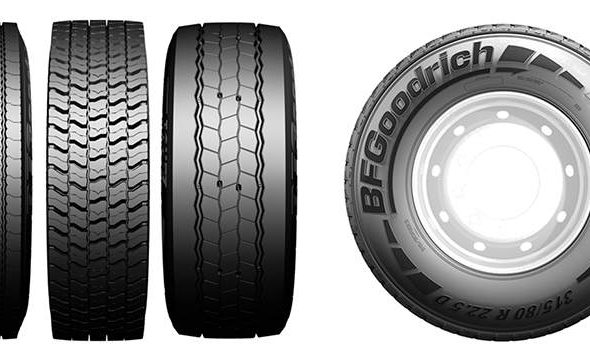 Euro-Metric Commercial or C-Type tires will look very similar to a passenger Euro-Metric size except that there will be a “C” right after the rim size: 23/65R16C 121/119R. Notice that the C-type tires also have two load index numbers. Euro-Metric Commercial, or C-Type is a designation standardized by the European Tyre and Rim Technical Organization for a light truck type tire. Light truck tires are designed to be used on vehicles capable of carrying heavy cargo and are usually only specified by a vehicle manufacturer on vehicles exceeding a certain load capacity.
Euro-Metric Commercial or C-Type tires will look very similar to a passenger Euro-Metric size except that there will be a “C” right after the rim size: 23/65R16C 121/119R. Notice that the C-type tires also have two load index numbers. Euro-Metric Commercial, or C-Type is a designation standardized by the European Tyre and Rim Technical Organization for a light truck type tire. Light truck tires are designed to be used on vehicles capable of carrying heavy cargo and are usually only specified by a vehicle manufacturer on vehicles exceeding a certain load capacity.
Other types of tires that fall into the Metric sizing type are Temporary Spares, they start with “T”. If you see a size that starts with “ST,” that means “special trailer” and is only for use on a trailer.
Regardless of whether you are looking at a P-Metric, Euro-Metric, LT-Metric, Euro-Metric Commercial, T or ST tire the numbers in the size mean the same thing.
The first number to appear in your tire size information is the width, in millimeters, of the correct tires for your vehicle: P225/70R16 91S.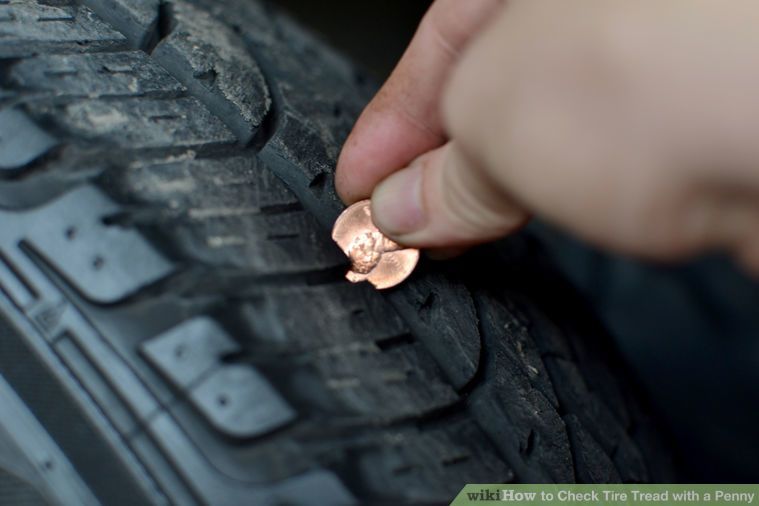
Tire width always refers to the measurement from one sidewall to another. Thus, a tire with the measurement “P225” is for a passenger vehicle and has a nominal width of 225 millimeters.
After the slash mark, the next number you see is for the tire’s aspect ratio, which essentially tells you how tall your tire’s profile is: P225/70R16 91S. Aspect ratios are delivered in percentages. Tire makers calculate the aspect ratio by dividing a tire’s height off the rim by its width. If a tire has an aspect ratio of 70, it means the tire’s height is 70% of its width.
Lower aspect ratio tires, such as a 60 series, generally offer vehicle handling performance advantages over higher aspect ratio tires, such as a 75 series, but a typical trade off can be ride harshness.
After the aspect ratio comes a letter that indicates the type of internal construction maintaining your tire’s stability: P225/70R16 91S.
There are two types of construction that you may see on the sidewall of a tire:
Radial tires are the most common tires on the road in the United States today; thus “R” will usually be shown in the tire size designation. Radial construction means the tire’s internal ply cords are oriented in a radial direction, from one bead over to the other, essentially perpendicular to the direction of rotation. You may also occasionally see RF indicating a run flat tire or ZR indicating a tire that is a speed rating higher than V.
The next number is the diameter code, in inches, of the rim onto which the tire can be mounted. For example, a tire with the P225/70R16 91S would fit a rim with a 16-inch diameter.
Load index can be a confusing subject because there are so many different caveats, but we will try to explain everything here.
The next figure after the rim size in the sequence is your tire’s load index, which tells us how much weight, in pounds, the tire can support when fully inflated: P225/70R16 91S
We call it the load “index” because the number doesn’t tell us the precise number of pounds the tire can carry, at least not by itself. However, the number does correspond to a specific load capacity listed in an index. Beginning with 1 and ending with 150, numbers in the load index represent carrying capacities of 99 to 7385 lbs.
There are two types of load types for passenger tires though, Standard Load and Extra Load. If a tire is Standard Load there will be no markings indicating it but if it is Extra Load the letters XL will appear after the size and load index.
Standard Load Euro-Metric: 215/55R17 94V
Extra Load Euro-Metric: 215/55R17 98V XL
Passenger car tires like P-Metric and Euro-Metric will only have one load index number where LT-Metric and Euro-Metric Commercial (C-Type) will have two numbers separated by a slash.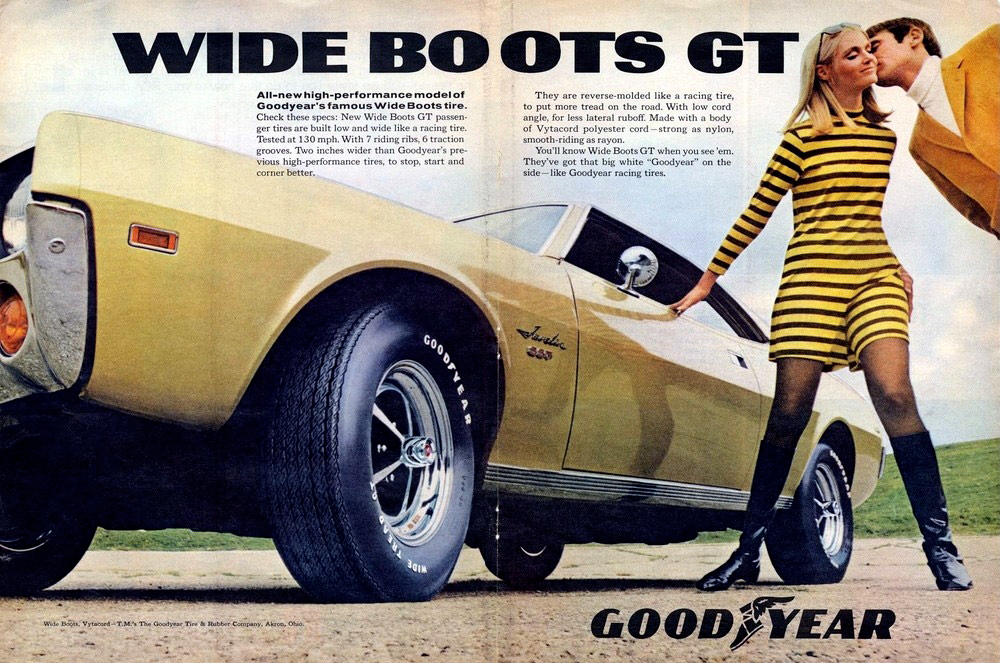 The first number is the load index if the tire is used in a single application, the second number is the load index if the tire is used in a dual application. Passenger type tires cannot be used in a dual application. Light truck tires will also have a Load Range that is indicated by a letter, such as Load Range E. Load Range is an older term that is still commonly used in the industry so you may hear your tire dealer reference it but the load index numbers are the best way to ensure you have the proper tire.
The first number is the load index if the tire is used in a single application, the second number is the load index if the tire is used in a dual application. Passenger type tires cannot be used in a dual application. Light truck tires will also have a Load Range that is indicated by a letter, such as Load Range E. Load Range is an older term that is still commonly used in the industry so you may hear your tire dealer reference it but the load index numbers are the best way to ensure you have the proper tire.
One important but often misunderstood facet about load index is that the load index numbers between standards organizations (P-Metric vs Euro-Metric) are not necessarily on the same scale. Meaning that two tires in the two different systems that have the same load index number could have different maximum load capacities. This is why it’s important to not only look at the load index number but also verify the actual load capacity.
The final figure in a tire size sequence is the speed rating, which is indicated by a letter: P225/70R16 91S.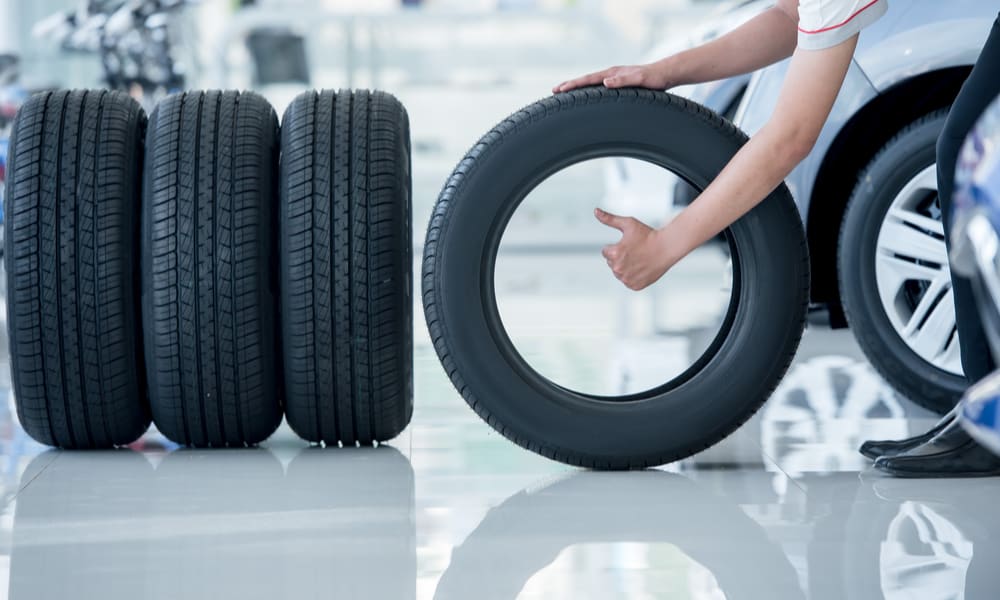 Just as your load index number corresponds to a specific load, your speed rating letter corresponds to a particular speed capability based on a standardized laboratory test.
Just as your load index number corresponds to a specific load, your speed rating letter corresponds to a particular speed capability based on a standardized laboratory test.
For example, a tire with speed rating “S” is rated for up to 112 mph, while a tire rated “R” is up to 106 mph. Remember that this isn’t a recommended cruising speed. Of course, you should always follow legal speed limits on roadways.
Replacement tires must have the same or higher speed rating as the vehicle’s Original Equipment to maintain vehicle speed capability. If a vehicle has tires with different speed ratings, it is the speed rating of the “slowest” tire that dictates the vehicle top speed.
There is one last sizing type that you should know about, especially if you are in the market for off road tires for a light truck or SUV. It’s called a Flotation size and the numbers in this sizing format are very different from the Metric formats.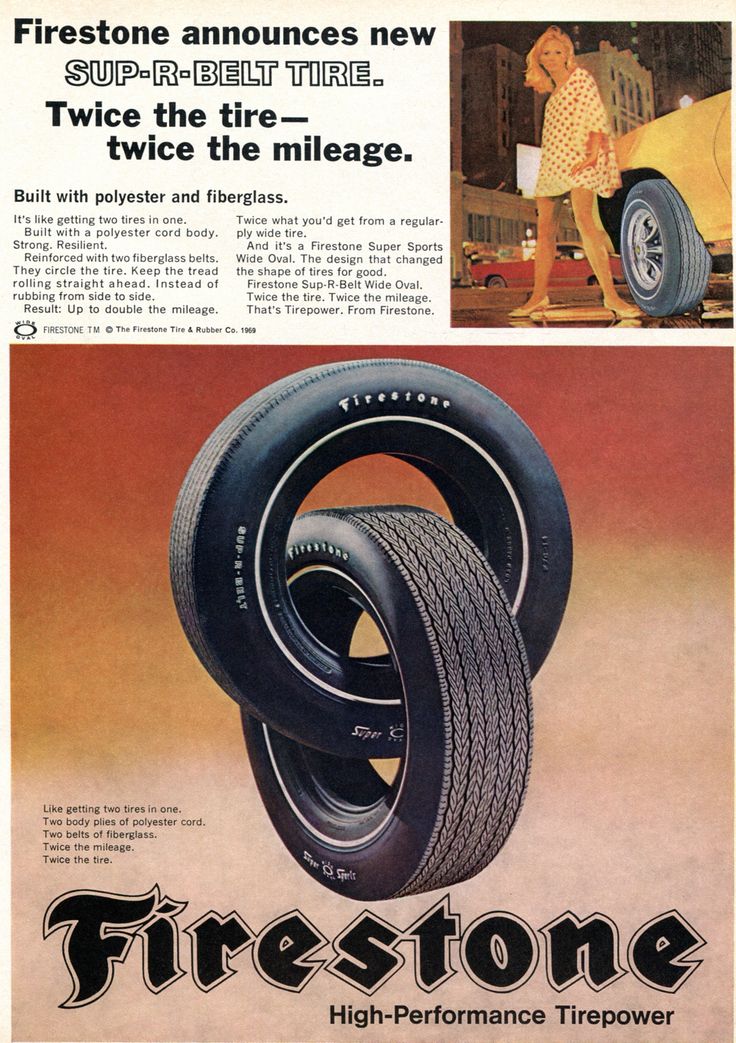 Flotation sized tires are similar to LT-Metric tires in application except for a few important points. Number one, they cannot be used in dual applications and number two, an equivalent size tire may have different load capacity than its LT-Metric counterpart.
Flotation sized tires are similar to LT-Metric tires in application except for a few important points. Number one, they cannot be used in dual applications and number two, an equivalent size tire may have different load capacity than its LT-Metric counterpart.
The first number in the Flotation tire size is the overall diameter in inches. Pretty straight forward.
The second number is the section width (sidewall to sidewall) measurement in inches. Again, fairly simple.
After the section width comes a letter that indicates the type of internal construction: 33X12.50R17LT 120Q.
This is the same as is found in the metric sizing systems.
There are two types of construction that you may see on the sidewall of a tire:
Radial tires are the most common tires on the road in the United States today; thus “R” will usually be shown in the tire size designation. Radial construction means the tire’s internal ply cords are oriented in a radial direction, from one bead over to the other, essentially perpendicular to the direction of rotation.
Radial construction means the tire’s internal ply cords are oriented in a radial direction, from one bead over to the other, essentially perpendicular to the direction of rotation.
The next number is the diameter code, in inches, of the rim onto which the tire can be mounted. For example, a tire with the 33X12.50R17LT 120Q would fit a rim with a 17-inch diameter.
The letters LT will be after the Rim Diameter indicating that this tire type is intended for Light Truck vehicles similar to the LT-Metric and Euro-Metric Commercial (C-Type) tires.
Load Index and Speed Rating have the same meaning and format as the tires using the metric sizing system. Note that since flotation tires cannot be used in a dual application there will be only one load index number instead of two.
Another group of stamping on certain types of tires is the Uniform Tire Quality Grading or UTQG. This grading and stamping is required for passenger car tires (i.e. P-metric and Euro-metric) in the all season and summer categories. Dedicated winter tires, Light Truck (LT-Metric, Euro-Metric Commercial, Flotation) and Motorcycle tires are excluded from this requirement.
Quality grading is designed to make the tire purchase decision easier for you. Ideally, the system is intended to provide simple, comparative data so you can make an intelligent buying decision. However, the ratings are based upon test results achieved under special conditions. This means it’s possible to misinterpret the comparative data as it relates to your individual driving habits, conditions, etc. You should still rely on your service or tire professional for assistance.
Quality grading designates the comparative performance levels of a tire based on government-specified tests but commissioned by the individual tire manufacturers.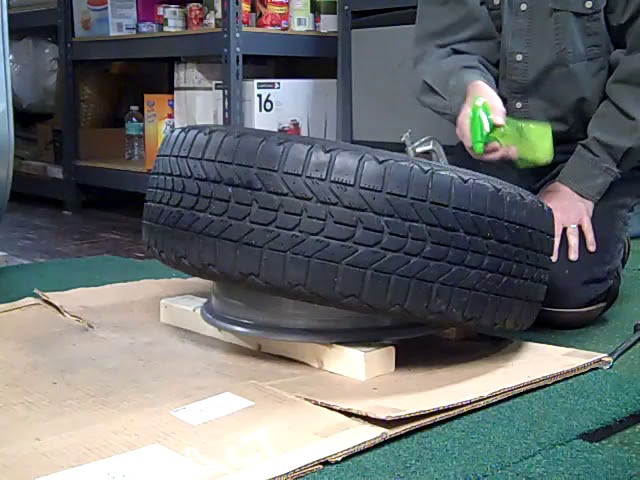 All tire manufacturers are required to grade regular and all-season passenger tires in three categories:
All tire manufacturers are required to grade regular and all-season passenger tires in three categories:
UTQG
Treadwear
The treadwear grade is a comparative rating based on the wear rate of the tire when tested under controlled conditions on a specified government test course for 6,000 miles (9,600 km). For example, a tire graded 150 would wear one and a half times as well on the government course as a tire graded 100. However actual tire performance depends on driving habits, road characteristics, service practices, and other factors that can influence the outcome.
Traction Grades AA, A, B and C
The traction grades from highest to lowest are AA (the highest), A, B and C. They represent how well tires stop on wet pavement as measured under controlled conditions on specified government test surfaces of asphalt and concrete. C-rated tires will have the lowest traction performance.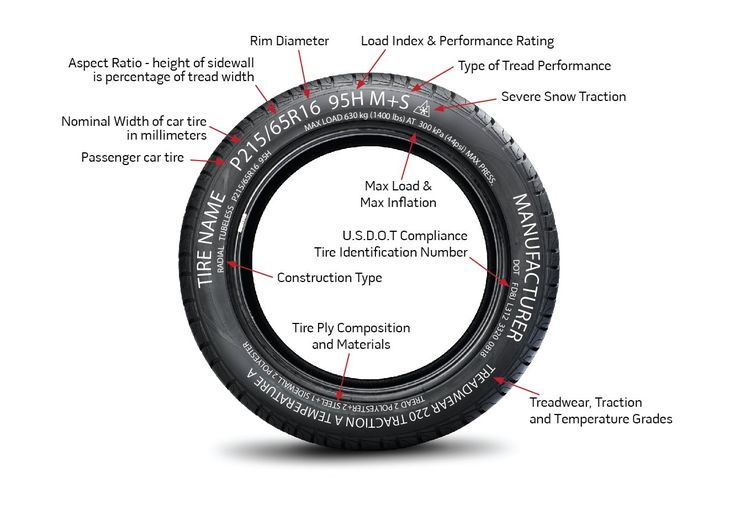
WARNING: THE TRACTION GRADE ASSIGNED IS BASED ON A WET BRAKING (STRAIGHT AHEAD) TRACTION TEST AND DOES NOT INCLUDE CORNERING (TURNING) TRACTION.
Temperature Grades A, B and C
The temperature grades A, B, and C represent the tire's resistance to the generation of heat and its ability to dissipate heat when tested under controlled conditions on a specified indoor laboratory test wheel. Sustained high temperature can cause the tire’s material to degenerate and reduce tire life, and excessive temperature can lead to sudden tire failure. The grade C corresponds to a performance level all passenger car tires must meet under the Federal Motor Vehicle Safety Standard No. 109. Grades A and B represent higher levels of performance on the laboratory test wheel than the minimum required by law.
WARNING: THE TEMPERATURE GRADE IS ESTABLISHED FOR A TIRE THAT IS PROPERLY INFLATED AND NOT OVERLOADED. EXCESSIVE SPEED, UNDER INFLATION, OR EXCESSIVE LOADING, EITHER SEPARATELY OR IN COMBINATION, CAN CAUSE HEAT BUILDUP AND POSSIBLE TIRE FAILURE.
DOT Quality Grades
All passenger car tires must conform to other federal requirements in addition to these grades.
Learn about our mission, our achievements, and our ongoing commitments
Read Our Origin Story
Pickup trucks and SUVs are available in different load carrying capacities. Compact pickups often feature 1/4 ton (226 kg) capacity while full-size pickups feature 1/2 (453 kg), 3/4 (680 kg) and 1 ton (907 kg) capacities. Full size SUVs are often available in similar load capacities. It is easier to "overload" a pickup truck than a passenger car, so tires on pickups and SUVs are more likely to experience additional stress. experience additional stress.
Switching from P-Metric/Euro-Metric to LT-Metric/Flotation
Many pickups and SUVs (especially compact and ½ ton) will come with P-Metric or Euro-metric tires as original equipment. These tires are selected by the vehicle manufacturer to meet the load capacity of the vehicle and so an equivalent replacement tire of the same size, load capacity and speed rating is of course appropriate. However, in some cases it may be desirable to switch from a P-Metric or Euro-Metric to an LT-Metric or Flotation size tire. Some of the benefits to switching to an LT tire can include:
These tires are selected by the vehicle manufacturer to meet the load capacity of the vehicle and so an equivalent replacement tire of the same size, load capacity and speed rating is of course appropriate. However, in some cases it may be desirable to switch from a P-Metric or Euro-Metric to an LT-Metric or Flotation size tire. Some of the benefits to switching to an LT tire can include:
Notice that none of the benefits include increased load capacity. That is because no matter what tire you put on your truck, the vehicle itself has a load capacity that should not be exceeded.
There are some important points to consider before deciding to switch your pickup or SUV from P-Metric or Euro-Metric to an LT type tire (LT-Metric or Flotation).
To determine the proper inflation pressure of LT tires on your vehicle use the following procedure:

Replacing LT-Metric/Euro-Metric Commercial (C-Type)
If your truck or SUV is ¾ or 1 ton capacity then it likely came from the factory with LT type tires. OE LT tires should never be replaced with passenger type tires, they do not have enough load capacity and are not designed to have the same load handling characteristics that your vehicle was intended for.
Also of consideration, if your vehicle has dual rear wheels, LT-Metric or C-Type tires should not be replaced with Flotation tires even if they are of equivalent physical size. Flotation tires are not intended for dual application and do not have dual load index stamping.
Trucks and SUVs tend to have a higher center of gravity than passenger cars. Ground clearance is important for trucks being driven off-road, and the only way to add clearance under the axles is to install taller tires. Designing the truck around taller tires results in a tall vehicle package and a higher center of gravity (with more body roll and load transfer), making the tires work harder, especially under braking and cornering situations and can make the vehicle less stable.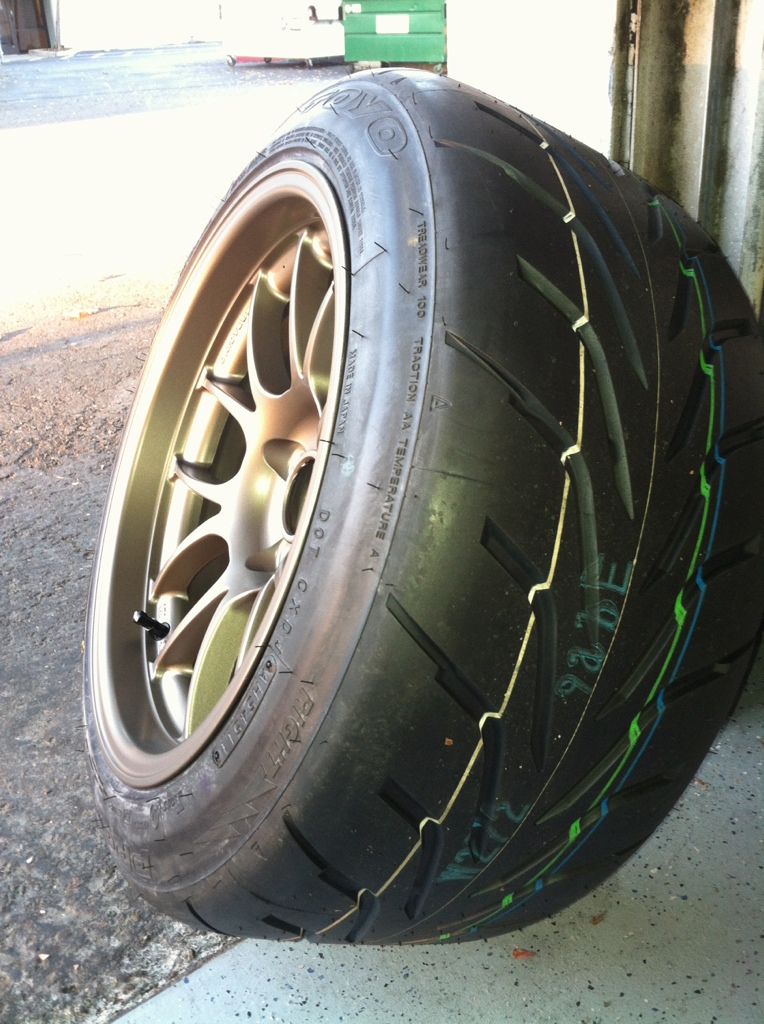
Learn about our mission, our achievements, and our ongoing commitments
Read Our Origin Story
An invariable and very important event in the life of any motorist with the advent of winter is the change of summer tires to winter. This process is traditional overgrown with rumors, all sorts of life hacks and advice. Sometimes workers tire shops present the same information in the opposite light. Of course, an inexperienced driver asks the question “who to trust?”. On Top questions about tread width and tire wear the well-known Ukrainian special magazine Avtocentre tried to answer. Moreover, he did it in the most correct form - by experiment. nine0003
Wide or narrow winter tires?
The journal experts conducted two tests using the famous friction (Velcro) rubber Nokian Hakkapeliitta R2 .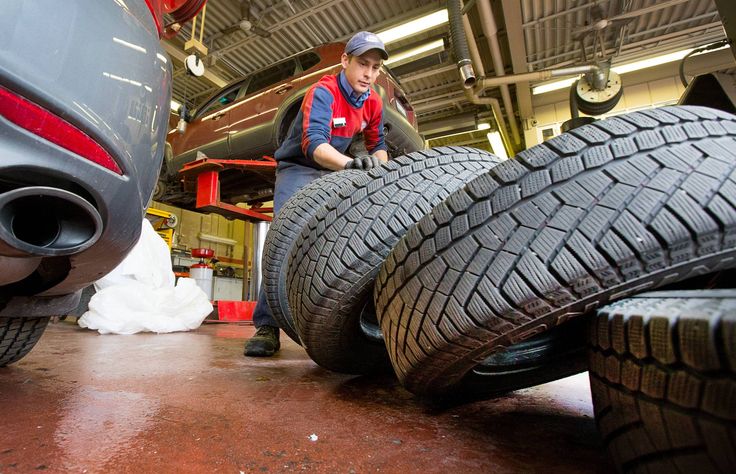 Were selected 2 sizes with different tread width: 225/45 R17 and 205/55 R16. Tests have been carried out on icy and snowy surfaces, acceleration was checked (from 5 km / h to 30-50 km/h) and stopping distance of the car (from 30-50 km/h to 5 km/h). The temperature during testing is -5 degrees Celsius. nine0003
Were selected 2 sizes with different tread width: 225/45 R17 and 205/55 R16. Tests have been carried out on icy and snowy surfaces, acceleration was checked (from 5 km / h to 30-50 km/h) and stopping distance of the car (from 30-50 km/h to 5 km/h). The temperature during testing is -5 degrees Celsius. nine0003
The results can be found below:
Conclusions:
Are used tires worse than new ones?
Different studded models were selected Nokian Hakkapeliitta 8 and old Nokian Hakkapeliitta 5. At the fifth The hakapelite tread was worn down to 4mm. This is a very important point, what different models were tested, notes the technical department of the online store Tires Kom.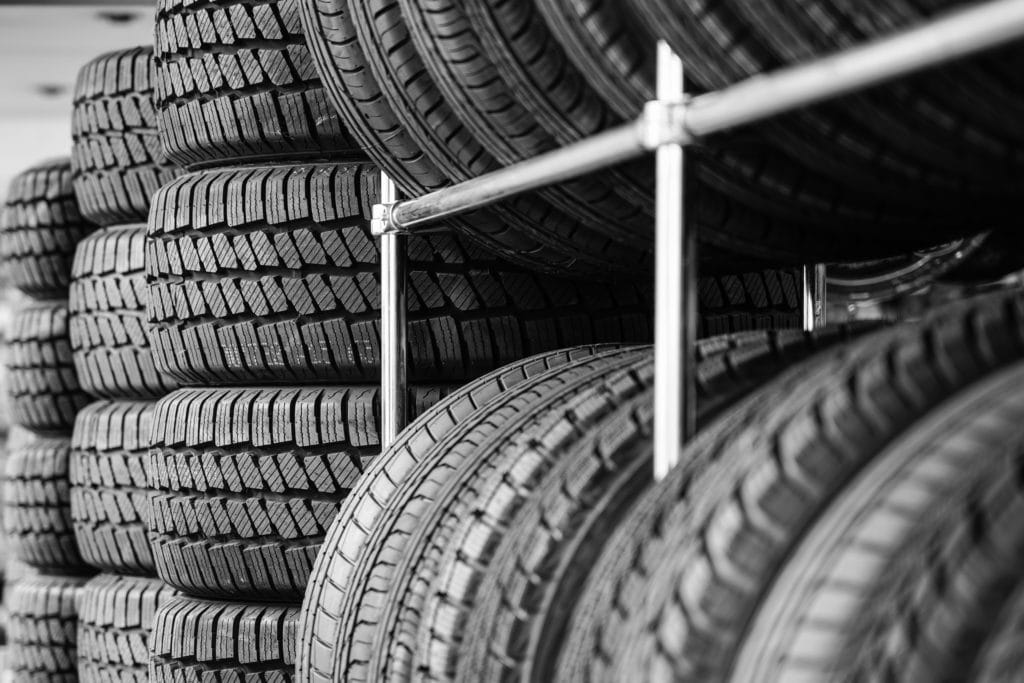 It is impossible to correctly say how old tires are worse than new comparing different models. However, the magazine "Autocentre" decided on this kind of experiment.
It is impossible to correctly say how old tires are worse than new comparing different models. However, the magazine "Autocentre" decided on this kind of experiment.
Test results:
As you can see, the results are quite expected.
On ice, the braking performance of the new rubber is 3 meters better (shorter), and acceleration is 1.5 seconds faster.
If this result is projected at high speeds, which are more close to reality, then the braking distance on the new tires will be better for 10-20 meters on average. This is a very important result, which suggests the need for a faster change of seasonal tires. nine0003
Of course, the test results of the Avtocenter magazine are not true in the last resort and each driver draws his own conclusions on based on your own experience. Disagree with many of the tests sufficient experienced tire workers of our online store, but in general terms The test confirmed the generally accepted point of view.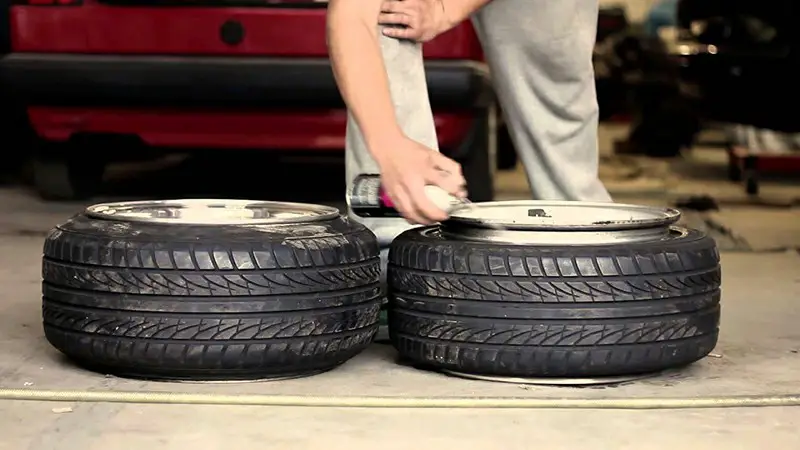
| What does a snowflake on a tire mean? nine0052 The snowflake on a tire (3PMSF marking) is a special marking for models that have been tested on snow and are able to meet the minimum requirements for driving safety on.. 06 January 2023, 11:08 | |
| Worn tires are more dangerous than drunk driving A new study has found that worn tires are more dangerous than drunk driving. It has been found that driving a vehicle with tires that have an approved tread depth of 1.6 mm can increase... 26 December 2022, 11:02 | |
| Tire labels - how to read? From November 1, 2012, tires sold in countries within the European Union must have special stickers. They contain information, in particular, on the fuel. July 11, 2022, 11:34 | |
| Causes of tire wear Tire wear is often the result of too much speed at which we move. However, there are many more factors influencing this process. Tire condition during .. 04 July 2022, 11:58 | |
| What is the minimum tread depth allowed? The tread of a tire is sometimes analyzed in terms of appearance and shape, modern technologies implemented by the manufacturer, or performance in winter conditions. However, the key parameter of tires in.. June 23, 2022, 10:06 | |
Many car enthusiasts ask a similar question, but not everyone decides to deviate from the manufacturer's recommendations.
Replacing regular car wheels is one of the simplest types of tuning. Why is this needed? There are many options. The most common reason is not liking the look. Let's say you want the wheels to look spectacular. To do this, the disk must be larger in diameter. Well, or you bought a used car, and the design of the rims absolutely does not suit you. Perhaps you liked some specific wheels, but their dimension is not included in the list recommended by the car manufacturer. You can also change wheels based on practicality. But how can the installation of such wheels turn out in the future? Let's figure it out. nine0003
First, let's remember the key parameters of the wheel.
The main dimensions of the tire: D - outer diameter of the tire; H is the height of the tire profile; B - tire profile width; d is the diameter of the wheel rim (tire).
The main dimensions of the tire: D - outer diameter of the tire; H is the height of the tire profile; B - tire profile width; d is the diameter of the wheel rim (tire).
Related materials
The traffic police prescribed requirements for converted cars nine0003
Next, we will tell the story on the example of tires for a very common size on B-class cars 185/65 R15. These are the popular Rio, Solaris, Logan, Largus, etc. By the way, let me remind you what all these designations mean.
So, there are several ways to move away from the standard wheel size . nine0147
While maintaining the standard size of the rim, we increase the width of the tire profile while maintaining the percentage of height to width. In our example, we get 195/65 R15. It is important to know here that all cars are designed for the installation of snow chains with a size of at least 12 mm. Indeed, in some European countries, driving on mountain roads without chains is prohibited, and not a single self-respecting manufacturer will make a car so that it cannot be operated in the mountains of France or Switzerland. Therefore, an increase in the width of the tire profile is permissible in most cases by up to 24 mm. At the same time, the car will become a little softer on the go, and wider tires will improve braking performance. nine0147
At the same time, the car will become a little softer on the go, and wider tires will improve braking performance. nine0147
Related materials
Wheel care: checking wheel and tire products
We leave the rim unchanged, and increase the percentage of tire profile height to width to 70. In our example, we get 185/70 R15. The outer diameter of the wheel increases by 20 mm, which is quite acceptable (remember the reserve for installing chains). Everything would be fine, but in our specific example, the factor intervenes that tires of this dimension are produced mainly for commercial vehicles and they are too rigid and expensive to install on a passenger car. However, in other dimensions, the situation may be different. nine0147
The story of a friend's car is quite revealing. He bought a Kia Rio with a 1.6 engine and a 6-speed automatic. The regular wheels of the car had a size of 185/65 R15. The owner drove through the summer season and was not happy with the rigid suspension of the car and insufficient ground clearance. Then he decided to change the behavior of the car, not by tuning the springs with shock absorbers, but by working with the wheels. In preparation for the next summer season, he used forged wheels with a diameter of 14 inches, which completely matched the mounting dimensions. nine0119
The owner drove through the summer season and was not happy with the rigid suspension of the car and insufficient ground clearance. Then he decided to change the behavior of the car, not by tuning the springs with shock absorbers, but by working with the wheels. In preparation for the next summer season, he used forged wheels with a diameter of 14 inches, which completely matched the mounting dimensions. nine0119
The previous generation Kia Rio was equipped with 15-inch wheels in the base, but to make the car softer, the owner installed 14-inch wheels with 195/70 R14 tires.
Kia Rio of the previous generation was equipped with 15-inch wheels in the base, but to make the car softer, the owner installed 14-inch wheels with 195/70 R14 tires.
Related materials
Tire test "Behind the wheel" - we measure the braking distance in heat and cold nine0003
There is noticeably more air between the rim and tire. The outer diameter of the wheel has also grown (by 9 mm). As a result, the smoothness of the ride has become fantastic. When overcoming road roughness, the car, which was not originally famous for its energy-intensive suspension, began to resemble cars of the log-shaped family, which are super-comfortable on Russian roads. Soft, quiet, smooth. All the problems of the dead Russian roads and the rigid Korean suspension have disappeared. He does not plan to drive, so he does not care about the possible deterioration in road holding at very high speeds. nine0003
The outer diameter of the wheel has also grown (by 9 mm). As a result, the smoothness of the ride has become fantastic. When overcoming road roughness, the car, which was not originally famous for its energy-intensive suspension, began to resemble cars of the log-shaped family, which are super-comfortable on Russian roads. Soft, quiet, smooth. All the problems of the dead Russian roads and the rigid Korean suspension have disappeared. He does not plan to drive, so he does not care about the possible deterioration in road holding at very high speeds. nine0003
However, disc diameter reduction is very rare. Much more often it happens that the owner chooses discs one or even two sizes larger. And "wraps" them in low-profile tires. At the same time, the overall dimensions of the wheel remain almost unchanged or grow within acceptable limits.
A typical low profile tire.
A typical example of a low profile tyre.
Related materials
Tire pressure: your norm nine0003
Looks impressive, but first of all, smoothness suffers. Yes, and there are much more chances to damage a wheel on a bad road, because the lower the height of the tire profile, the less the ability of such a tire to withstand shock loads. In everything you need to know the measure. Returning to our example, Rio and Solaris cars in expensive trim levels sport 16-inch wheels with 195/55 R16 tires. In this case, you can play a little with the sizes. For example, a 195/60 R16 tire will fit in the wheel well without any problems, since its outer diameter will increase by only 19mm. The clearance will grow by a decent 9.5 mm, but you can forget about the softness of the ride provided by the 15-inch wheels of the basic modification.
Another story when a car owner decides to install wider disks.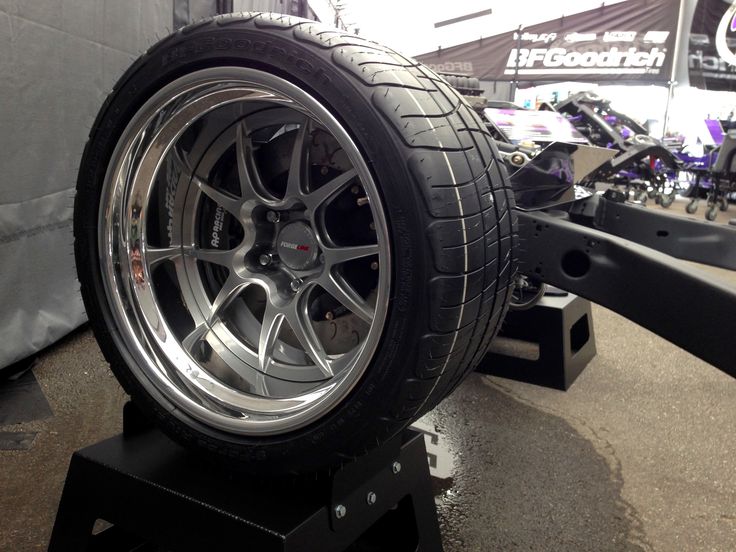 Some people like it when the wheel protrudes a little beyond the arch. Please note that changing the dimensions of the wheel and tire can significantly increase the mass of the wheel assembly. Such weighting will negatively affect the life of the suspension elements and even the body, since large unsprung masses can cause resonant vibrations for which the suspension is not structurally designed. It is also important to remember such a parameter as wheel offset. nine0119
Some people like it when the wheel protrudes a little beyond the arch. Please note that changing the dimensions of the wheel and tire can significantly increase the mass of the wheel assembly. Such weighting will negatively affect the life of the suspension elements and even the body, since large unsprung masses can cause resonant vibrations for which the suspension is not structurally designed. It is also important to remember such a parameter as wheel offset. nine0119
Wheel offset is the distance between the plane of symmetry of the rim and the surface adjacent to the vehicle hub. From left to right in the diagram are shown: negative overhang, zero overhang and positive overhang.
Wheel offset is the distance between the plane of symmetry of the rim and the surface adjacent to the vehicle hub. From left to right in the diagram are shown: negative overhang, zero overhang and positive overhang.
Those who like to change the offset of the rims, as a rule, tend to place the wheels wider. The aesthetic component of such changes is controversial, but the resource of the suspension elements will certainly decrease. nine0003
The aesthetic component of such changes is controversial, but the resource of the suspension elements will certainly decrease. nine0003
| It is, of course, possible to pull narrow and inexpensive tires onto rims that look more like solid pipe sections with flanges, but the deformation of the tire carcass will soon render it unusable. You don't run into many of these. Of course, it is possible to pull narrow and inexpensive tires onto rims that look more like solid sections of pipes with flanges, but the deformation of the tire carcass will soon render it unusable. You don't run into many of these. | Even large crossovers, which, in comparison with sedans, seem to be a sort of bumpkins, when you install low-profile tires, they begin to manage at least “good”. nine0003 Even large crossovers, which in comparison with sedans seem to be a sort of bumpkins, when you install low-profile tires, they begin to manage at least "good". | On the utility Sobol, a tuning enthusiast installed discs that significantly increased the track. Curious looks from others are guaranteed, as well as a reduced life of wheel bearings and shock absorbers. On the utilitarian Sobol, a tuning enthusiast installed discs that significantly increased the track. Curious looks from others are guaranteed, as well as a reduced life of wheel bearings and shock absorbers. nine0002 The wheel may touch body parts. If the width and diameter of the wheel grow no more than 24 mm from the maximum wheel size recommended by the manufacturer, then this problem is not terrible for you. Only after that you can’t put chains. |
| Economy improvement. Economy improves slightly on country roads, especially on vehicles with gearboxes that have few gears (4 or 5). | Vehicle roll increase. Yes, the roll will increase slightly, due to the fact that the center of mass is now slightly higher. | |
| Change the speedometer and odometer. Stock gauges always overestimate readings. You can check by GPS. And with new, slightly larger wheels, the readings will come in line with reality. Plus or minus you decide. Still, such a discrepancy is made primarily for security reasons. We are for accurate instrument readings. nine0003 | Derating. The new wheels are a little harder for the engine to turn, and they themselves are a little heavier. | |
| Reducing the offset of the discs (when the wheels protrude more out of the wheel arches) provides a wider track, which improves the lateral stability of the machine . | The wide disc is easily damaged by when touching a curbstone. In addition, if the width of the disk is much larger than the standard one, the tire carcass does not work correctly. This leads to increased tire wear . | |
| In most cases, looks more aesthetic and catchy. | Protruding wheels overload wheel bearings and make driving difficult . As soon as the front wheel hits an uneven road, the steering wheel literally pulls out of your hands. |
It is convenient to use a tire calculator for calculations. nine0147
Custom wheels are prohibited by law. Therefore, any experiments with the dimensions of tires or wheels are illegal. An exception is if the new dimension is allowed to be set by the manufacturer. However, in reality, not everything is so scary: if the rims on your small car are not boiled down to a width of 12 inches, if the diameter is not 19 or more inches, then such wheels will not arouse the interest of traffic police officers. But there will already be problems with obtaining a diagnostic card. nine0119
Boiled discs may be of interest to traffic police officers, because the use of such discs is a direct intervention in the design of the car, which is prohibited.